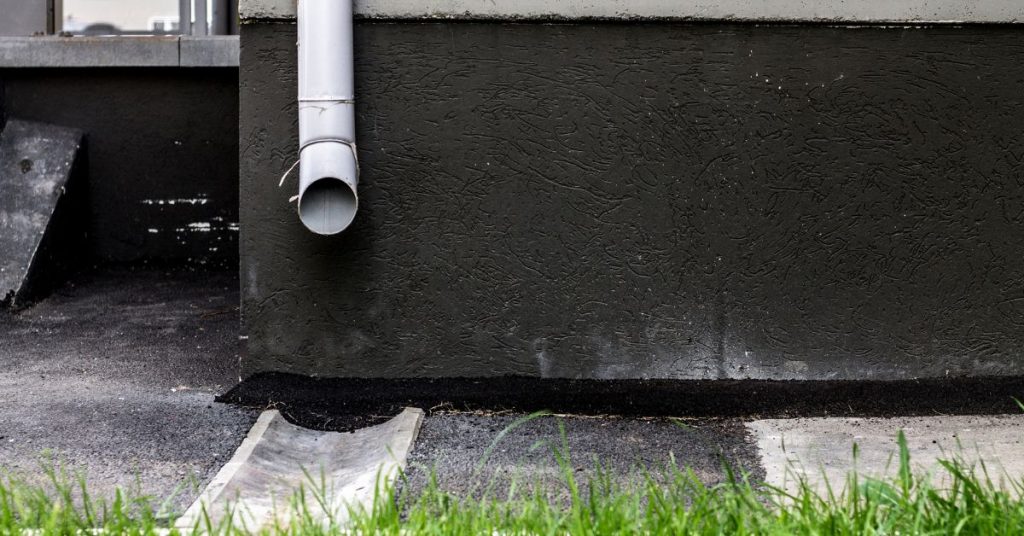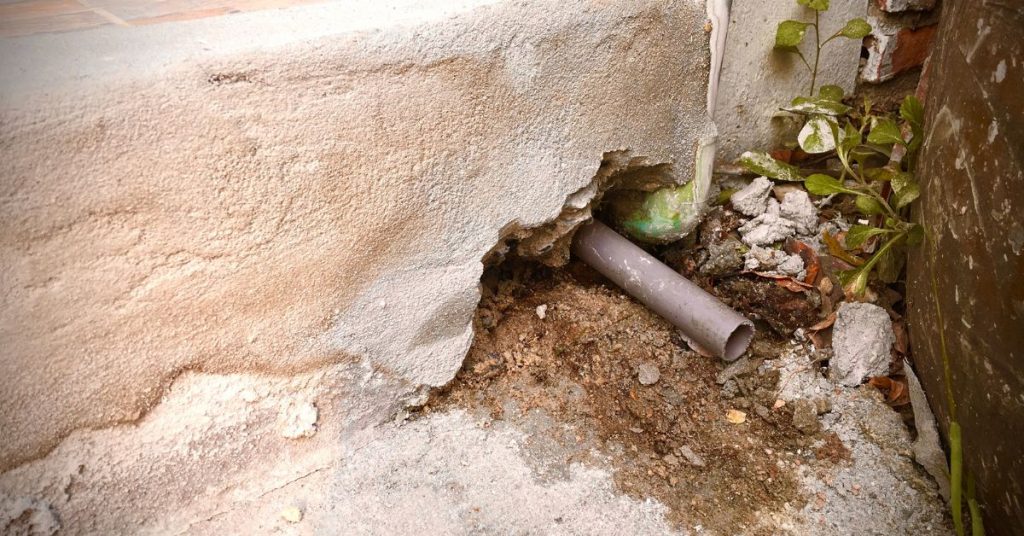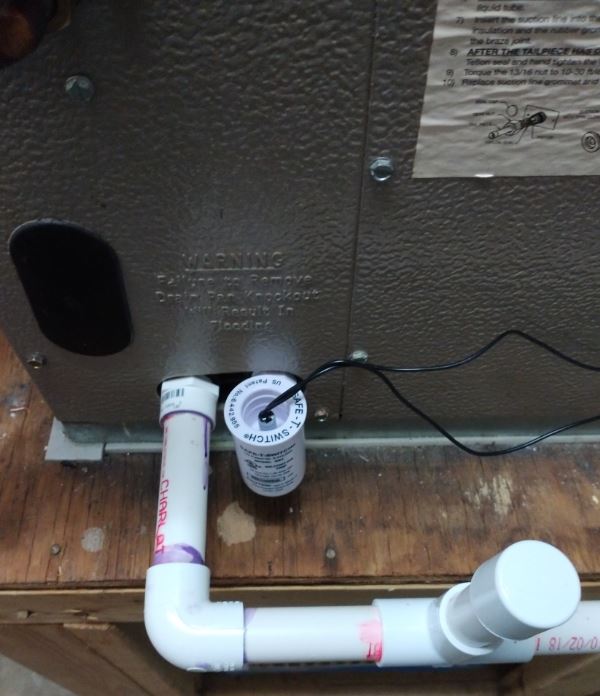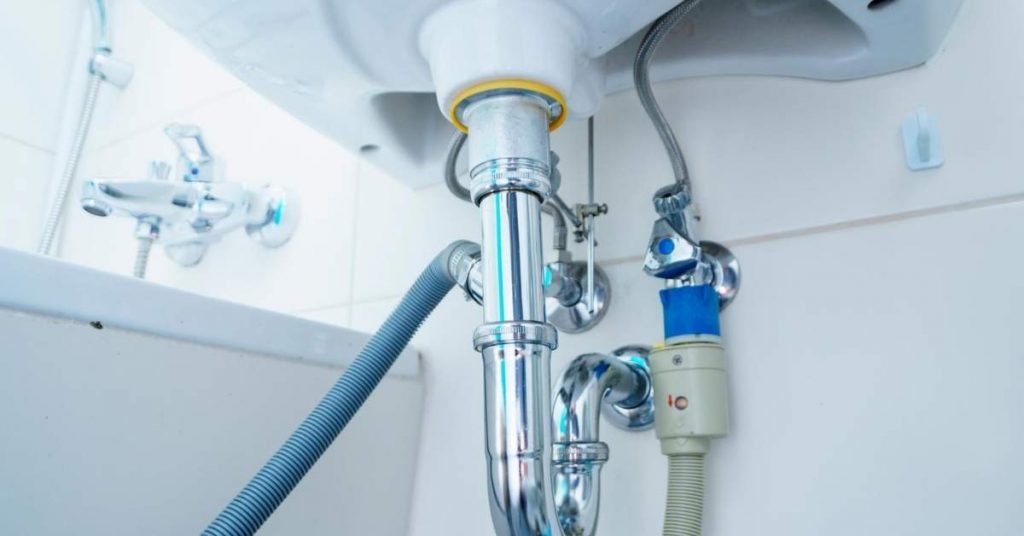
Locating your air conditioner (AC) drain line is a crucial step in maintaining your AC system and preventing water damage. The drain line is responsible for removing condensate, or the water that forms during the cooling process, away from the unit. Here’s a summary of how to find your AC drain line:
- Identify the Indoor Unit: Start by locating the indoor unit of your AC system. This is typically found in a utility room, basement, attic, or closet.
- Locate the Condensate Drain Pan: The drain pan collects the water that forms on the evaporator coils when warm air passes over them. It’s usually located beneath the indoor unit. Depending on your system’s design, the drain pan may be made of metal or plastic.
- Trace the Drain Pipe: From the drain pan, there will be a PVC (polyvinyl chloride) or plastic pipe that carries the condensate away. Follow this pipe until you find its exit point. The drain pipe will typically be 3/4 to 1-inch in diameter and can be either white or clear.
- Look for the Exit Point: The drain pipe usually exits the building through a wall, floor, or ceiling, depending on the installation. It may be connected to a drainage system, sump pump, or simply extend to the exterior of your home.
- Examine the End of the Drain Pipe: At the end of the drain pipe, you may find a small opening or a termination point. This is where the condensate water is discharged. Ensure that this endpoint is not obstructed and is allowing water to flow freely.
- Perform Regular Maintenance: To prevent clogs and ensure proper drainage, it’s essential to clean the drain line periodically. You can do this by using a wet/dry vacuum or a pipe cleaning brush to remove any debris or algae that may have built up inside the line.
- Consider Installing a Drain Line Cleanout Tee (Optional): For easier maintenance and cleaning, you can install a drain line cleanout tee at a convenient location along the drain line. This allows you to access and clean the line more effectively.
Where is My AC Drain Line Outside?
In most houses, it is very easy to locate the AC drain line outside the house. It will be a white PVC pipe ending a few inches from the ground supported on the outside wall and will in most cases be angled/elbowed away from the wall.
AC drain pipes can also me made from copper pipes. Most people however prefer to use PVC since it is way cheaper and easier to install compared to copper.
To quickly locate your AC drain line outside the house, look for it very close to where you have the outside/condenser unit. Since outside units are located as close as possible to the inside unit, it also makes sense to have the drain line close to the outside unit.
Some installations are however so badly done that that AC drain lines comes directly out of the wall and very close to the ground and it can be hard to spot it. If you can’t see your AC drain line outside the house, try to see if you can trace it from inside the house.

From inside the house, you can see which side of the house the drain line exits from and all you have to do is go outside and search the exact point.
Where is My AC Drain Line inside the House?
As I mentioned, the condensate drain line runs from the indoor unit to the outside of the house. So, how can you locate/access the condensate drain line inside the house?
You will first need to locate your indoor AC unit. That will be in the basement, crawlspace, attic, and garage or in a utility closet. The drain line will be connected from the drip pan but that will depend on the type of unit you have.
If you have a vertical AC unit (where the evaporator coil will be above the furnace or air handler), you will have only one drip pan. Horizontal units like those installed in attics have 2 drips pans, one below the evaporator coil and a bigger one under the entire unit.
Sometimes the secondary drip pans (the big one below the entire unit) will have a separate drain line and in some cases they won’t. It depends on how they were installed.
Nonetheless, you should see a PVC pipe coming from the AC unit with a small vertical pipe in the form of tee with a cap on top. That is the AC drain line access. To access the drain line you will only need to remove the cap.
Next to the cap you will also see the AC float switch. The float switch turns the AC off when the dip pan is full of water to prevent it from overflowing and causing water damage.

When an AC drip pan is full of water, it is usually a sign that the AC drain line is clogged. A clogged drain line cannot remove the water from the pan.
AC drain Line Connected to the Bathroom Sink
If you cannot find your AC drain line outside the house (especially in new or remodeled houses), it is highly likely that the drain line is connected straight to the bathroom sink drain. This is especially common when your AC indoor unit is located in the attic.

As you know, bathroom sinks will only have one vertical drain line coming from the sink’s opening and exiting through the wall. That is different from kitchen sinks which have other connections like garbage disposal and/or dishwasher drain lines.
If you however notice that there is a drain line coming from the wall and connecting to the sink drain using a tee, then that is your AC drain line. That is not against the code and is therefore perfectly legal to have such and installation.
Signs of a Clogged AC Drain Line
Due to the humid nature of the AC drain line, it is a perfect breeding ground for mildew, algae, mold and other such organisms. If you don’t clean the drain line regularly, those organisms will multiply rapidly and clog the drainpipe.
Although your AC has an air filter, some dust particles will still manage to pass through and clog the drain line. That will be even worse if you forget to change the AC filter or when you use the wrong size of filter.
The clearest sign of a clogged AC drain line is a condensate drain pan full of water. The other one is when the AC won’t turn on. Musty smells from your supply air vents is a sign that the drain line is clogged, or about to clog.
As I mentioned, when the AC drain line is clogged and the drip pan fills with water, the float switch will turn the AC off to prevent it from producing the condensate. For that reason, when your AC drain line is clogged, your AC will also turn off, unless you don’t have a float switch meaning the drip pan will overflow with water.
How to Clean/Unclog an AC Drain Line
There are several ways to unclog/clean an AC drain line but I find that cleaning with vinegar is the best way if you to to use liquid cleaners. Bleach should not be used due to its corrosive nature.
Here is how to clean your AC drain line using vinegar:
- Turn off the air conditioner to eliminate risk of electrical shock.
- Locate the AC drain line access tee vent next to the indoor unit.
- Remove the cap and pour 1 cup of vinegar down the drain line
- Wait for 30 minutes then flush the line using water.
- Turn the AC unit back on.
- Repeat after 1 month.
Another method you can use to clean the AC drain line is by sucking the gunk out using a shop vac. Just connect the shop vac to the drain line’s outside end and run it for a minute.
If your AC drain line is connected to the house’s plumbing, it is very likely for it to clog where it connects to the sink’s drain. What you can do here is to disconnect the drain line from the sink drain then use a brush with a flexible cable to clean inside the sink drain as well as inside the AC drain line.
Make sure that you place an empty bucket under the drain line to collect the water dripping from the drainpipe.
Wrap Up
And basically that is how to locate and clean your air conditioner drain line. I hope that this post was detailed and helpful.





